Reproduction, planting of the lakonos and care without much worries
In the tropical and subtropical latitudes of the globe, the Lakonos family is widespread. The unpretentious American lakonos prevails. At home, in natural conditions, planting and care are not required for him, here he belongs to ruderal (weed) plants. More than 110 species are classified as laconic: annual and perennial grasses, shrubs, vines and trees. Some are used by humans.
short biography
In the 18th century, American phytolacca came to Europe (this is the second botanical name of the lakonos). The plant began to be cultivated: the crimson sap of the fruit tinted light grape wines, served as a dye for woolen and silk fabrics, giving various shades of red. Kermes berries, fatty grass - such synonyms over time got the Lakonos among the people. The juice of ripe seed fruits has replaced kermes - an expensive crimson fabric dye obtained from worms. Bold is named for the power of the stems and the varnish shine of ripe berries.
Pharmacists of Europe and America did not ignore the plant: it is used by the official medicine of the United States. Here, the fruits and roots are used as an emetic and laxative, and are recommended for skin diseases. The plant was used in Soviet times for the preparation of pharmaceutical products "Akofit" and "Phytolaktsin" (rubbing for articular diseases), "Anginol", "Ekhinor", "Merifit" (rinsing with tonsillitis). Phytolacca is poisonous to livestock and humans, but the berries are eaten by birds without harm, and the seeds are spread by them around the neighborhood.
In Ukraine, Moldova, Georgia, within the Caucasus, American lakonos is often found. At first, it was cultivated by winemakers. But since the poisonous components of the plant became known, the phytolacca was exterminated, ran wild, became a weed, settling on the roads, on wastelands. In central Russia and to the north, single specimens are grown by amateurs as an exotic and medicinal plant. Some are attracted by the decorativeness of a powerful bush from May to the snow: the luxury of large leaves, white candles of flowers from July to August, cobs of berries purple-black with a varnish sheen in autumn. Others appreciate the lakonos for its healing properties.
Tasting ripe, shiny berries, sweet in taste, threatens with severe poisoning. If the family has children, refrain from growing lakonos. The phytolaccin alkoloid in the plant causes shortness of breath, convulsions and paralysis of the respiratory organs. The use of drugs with laconos is contraindicated in pregnant women: it affects the pathology of the fetus.
Important!
In addition to the poisonous American lakonos, the edible lakonos is cultivated in the warm countries of the CIS. For food, all parts of this plant are used, fresh and canned. Herbal counterparts differ only in the color of the trunks. In the American, they are reddish, in the edible, green.
Growing conditions
Phytolacca is unpretentious. The only requirement of the plant is loose soil, which is necessary to penetrate deep into the taproot (carrot-like) root. The favorable natural conditions are complemented by good care. And then the plant is able to bloom in August of the first summer.
Reproduction of lakonos is possible in different ways:
- sowing ripe berries in open ground to a depth of 5 cm;
- transplanting young seedlings grown under an adult bush (the plant is capable of self-seeding);
- spring division of the root into parts with sprouts (cut the cuts with charcoal powder).
Seed propagation in ripe berries does not require the release of the pulp. Crops should be sprinkled before freezing with a layer of sawdust, peat, or laid on top of straw.
Landing begins with choosing a seat.The best would be an open sunny space, taking into account the dimensions of an adult bush. It grows rapidly with a radius of 1 m, reaching a height of 2 m. If such spaciousness cannot be provided on the site, the lakonos will adapt to the cramped conditions near the fence and outbuildings.
Large inflorescences in early summer, luxurious berry candles by autumn will ensure planting in fertile soil, timely care. In lean lands, plants weaken.
Plant care is the most common:
- weeding of weeds near young lakonos (over time, the weeds in the vicinity of the giant themselves will not grow);
- loosening the soil around the trunk;
- watering during dry times;
- feeding 1-2 times during the growing season with mullein infusion;
- cutting grass after frost to the ground;
- covering the roots from above (soil, peat, straw, fallen leaves) - the thickness of the covering layer is selected depending on climatic conditions, with a snowy winter, 10 cm is enough;
- release of the plant from the casing layer in spring after frost (shoots are cut late);
- introduction of dry wood ash into the soil during the first loosening (1-2 handfuls are enough).
Pests bypass the bush, the plant does not suffer from diseases.
Leaving with a lack of time is minimized. The plant will manage with rainfall and nutrient reserves in the soil without spring-summer dressing. In the conditions of the Siberian climate, a shelter from freezing is required. This is required by reproduction according to any of the options.
Caring for the edible lakonos and the American one is no different.
Through the efforts of amateur gardeners, representatives of the Lakonosny family settle across Russia. Good care of unpretentious newcomers from the south creates an unusual exotic landscape.
Correctly prepared root infusions, if used wisely and wisely, will bring relief from various diseases. Remember: only external use of folk remedies from the lakonos is possible!
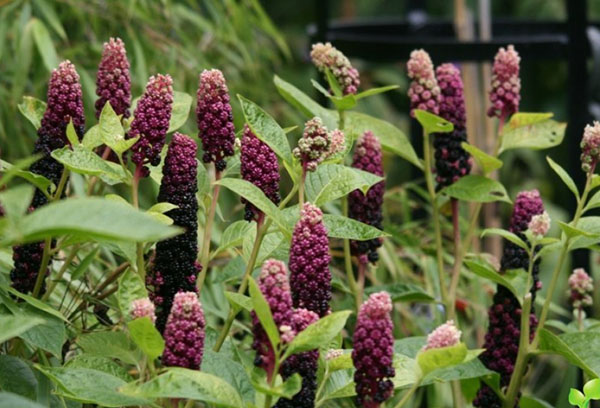
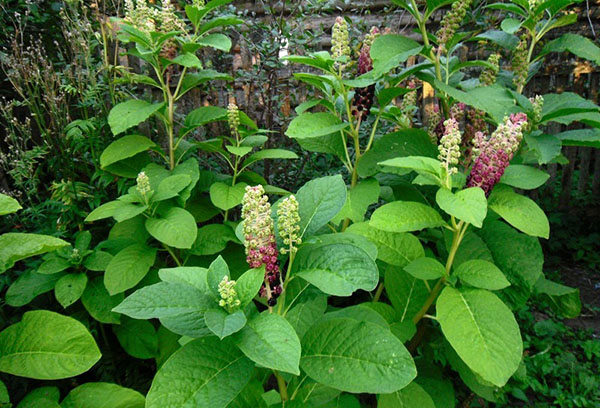
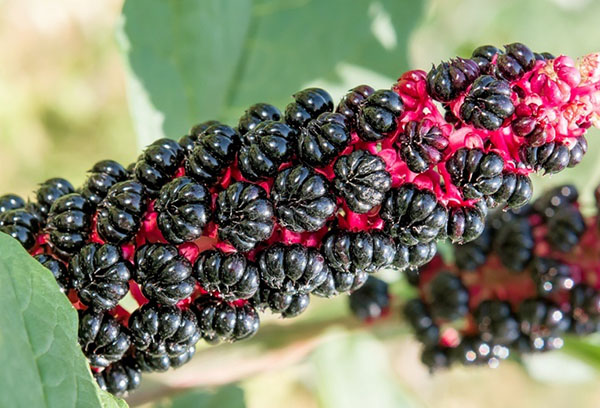
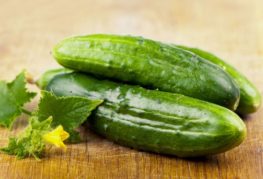
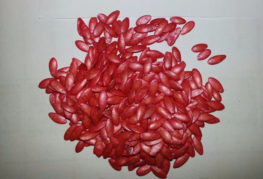
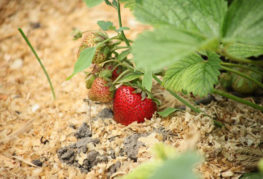
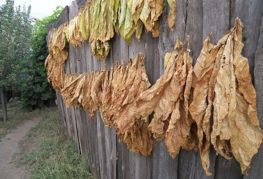
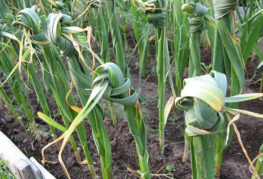
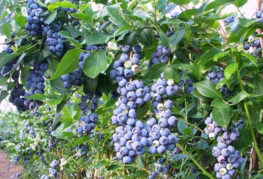
and will be published shortly.